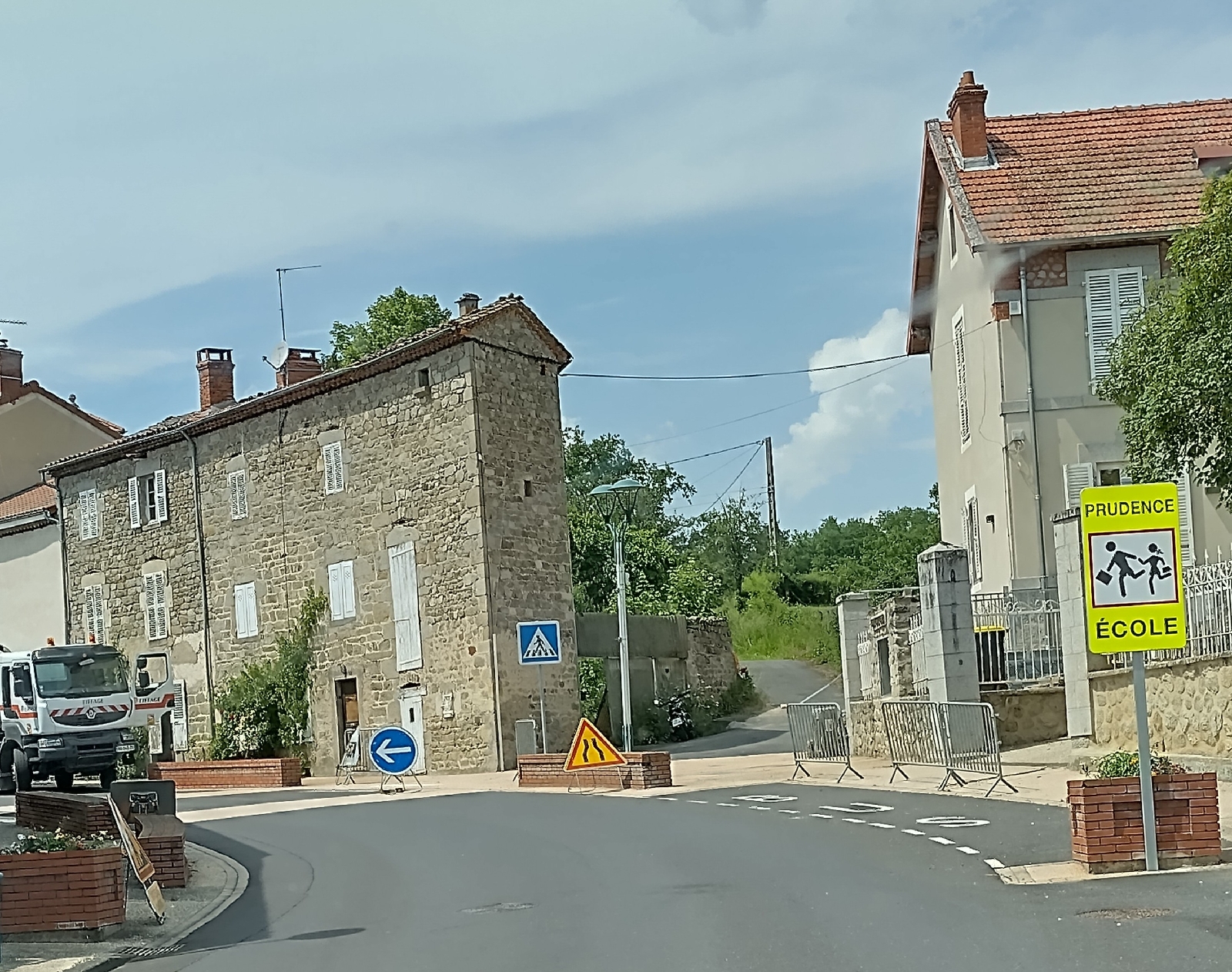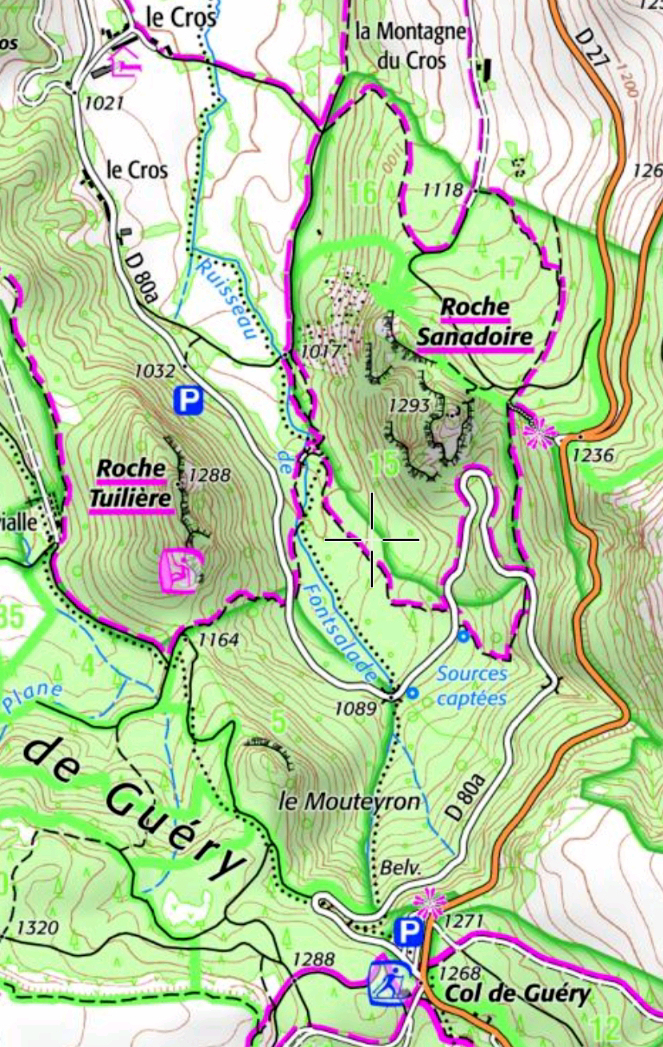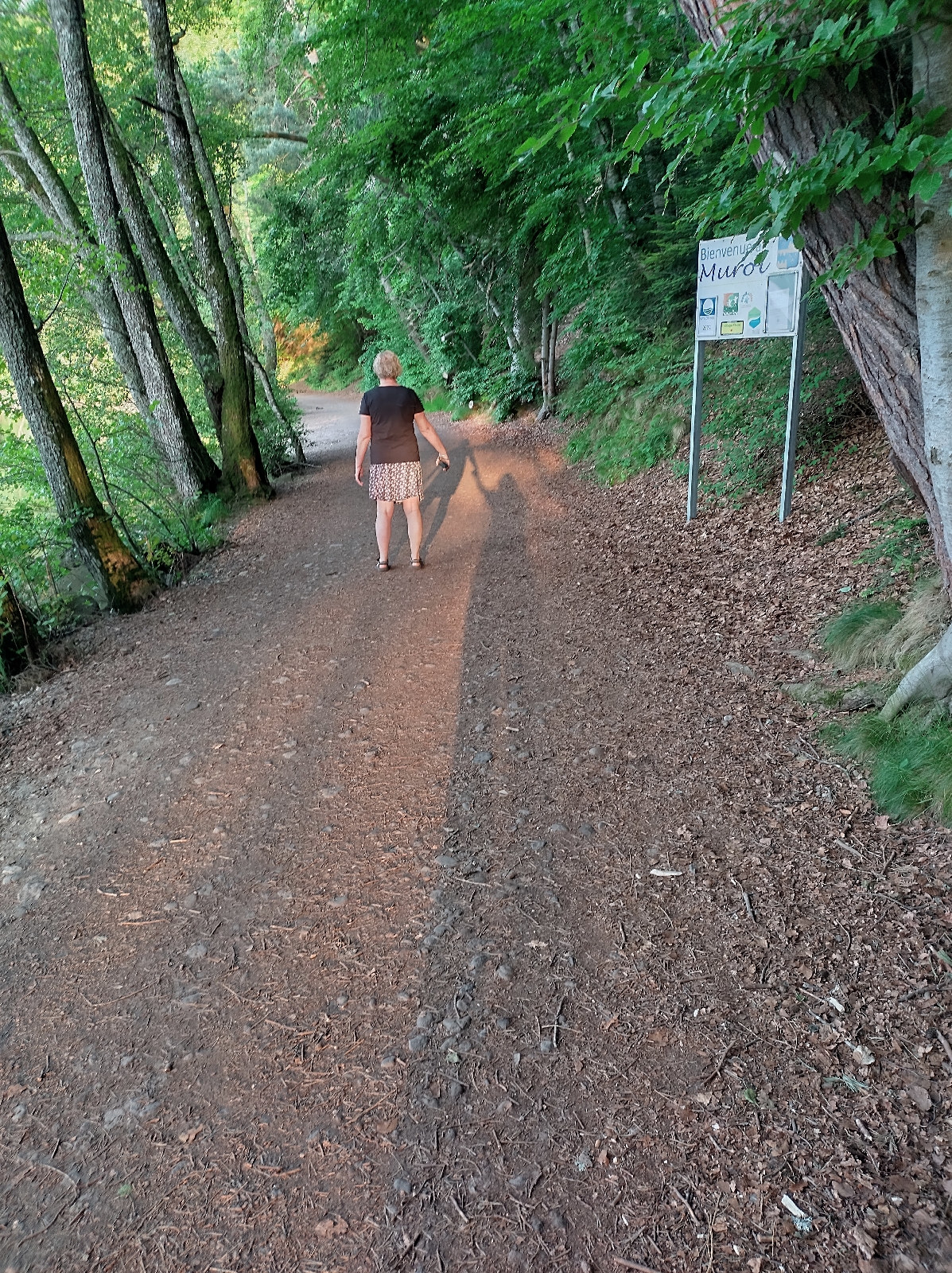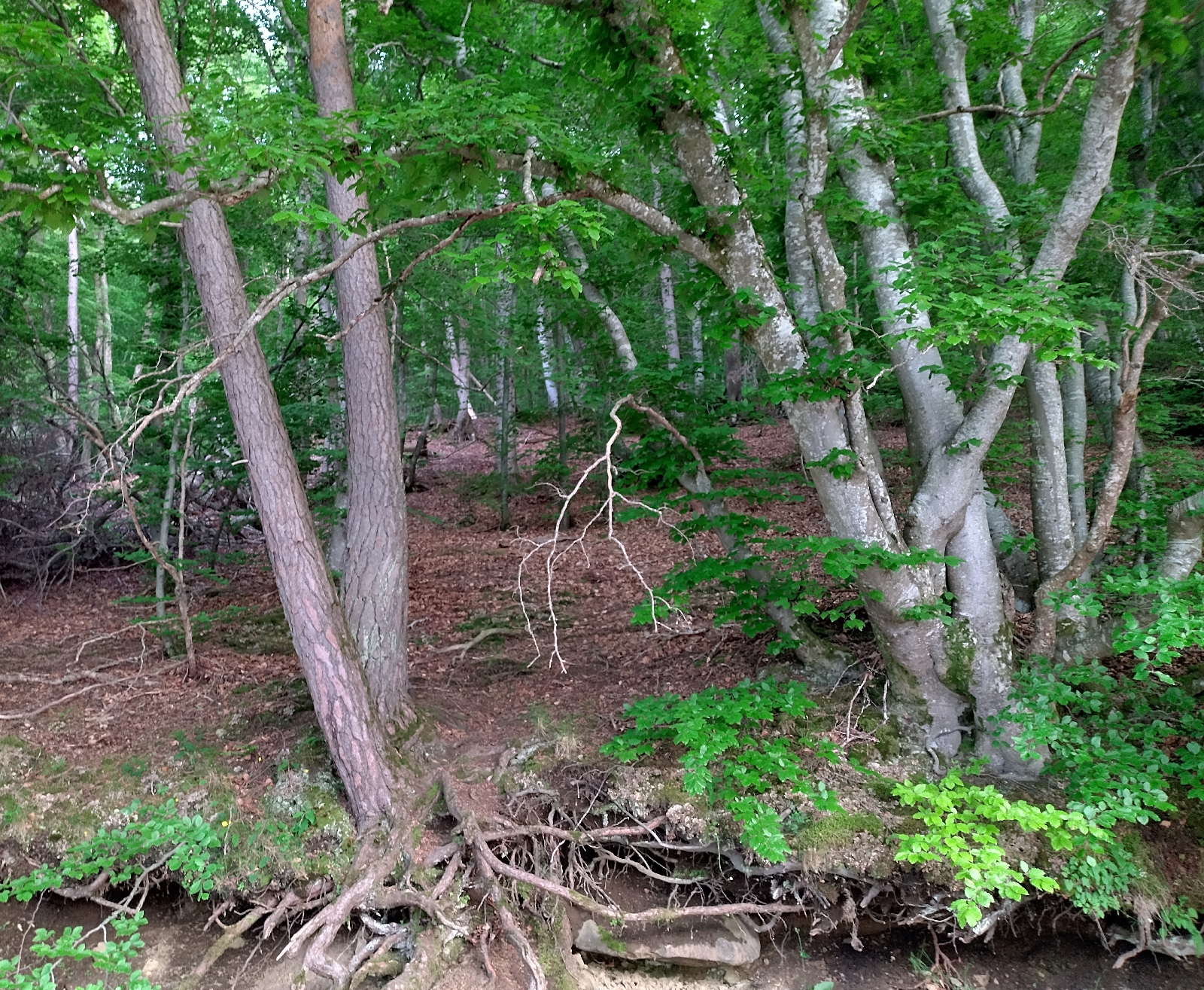Day 29 Ce parc ou ce parc ?🤔
This park or that park? 🤔 After yesterdays failed attempt to get to the north of the Parc Naturel règional Livradois-Forez we tried again, cutting east over to the D906 and then heading north. If we had enough time we might even make it back west to the next park.
The scenery started out ok and the pace of the traffic was to our liking. There is always something interesting to look at in the smaller towns and villages as you make your way thru or get stopped at road works or traffic lights.
The scenery started out ok and the pace of the traffic was to our liking. There is always something interesting to look at in the smaller towns and villages as you make your way thru or get stopped at road works or traffic lights.
Saint-Dier-d'Auvergne with its narrowest house in the world (maybe) 😅 and little things on buildings you wouldn't expect...
But by the time we had reached Ambert after travelling, what seemed like the, the longest, straightest road in the world it was time for a change. The D906 had become too fast a road for our liking, too man lorries.
We stopped for lunch, did a very quick spin round out of the layby and headed back towards Ambert to pick up the D996 and get onto the back roads again. Forget the north of this park, lets just head straight into the land of volcanoes 🌋, Le parc naturel regional des Volcans d'Auvergne 😯
The park is basically a huge plateau rising up to just over 4000feet which had lots of volcanic activity about 2 million years ago.
The most famous survivors of that age are The " Tuilière and Sanadoire " rocks.
Roches Tuilière and Sanadoire are "protrusions" (In geology, a protrusion is formed during a volcanic eruption when the extreme viscosity of the lava causes it to rise slowly in the form of a cylindrical piston that is calls “a protrusion needle,”)
We parked up at the observation place to take some piccys and try and translate the French infomation boards.
Over the centuries, the regular prisms, born from the slow cooling of the lava, disintegrate into thin and regular plates, known as "the slates" locally, we know them simply as 'slates' which were exploited until the middle of the 20th century and used to cover the roofs of houses and churches across the whole region.
All very interesting but we still didnt have a place to stay. Out came the mobile phones and maps; we um'ed and ar'ed about this site and that. We went to one place, the photos lied 🤨, it was next to a main road. In the end we back tracked across the park, on twisty roads to arrive at a camping carpark next to a lake for €15 a night with electric and water.
High sided hedges shielded us from the sun and our neighbours but it was a nice place. With 2hrs left of day light, covered in mozzy stuff we went for a gentle walk around the lake as the sun started to set, casting beams of golden light thru the trees. It was a nice end to the day.
























Comments
Post a Comment